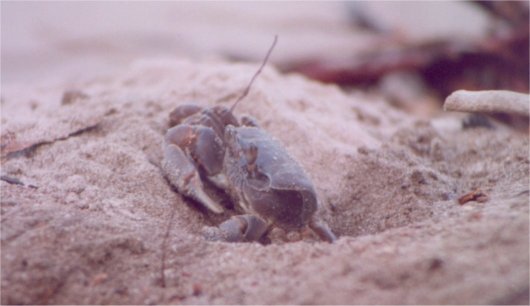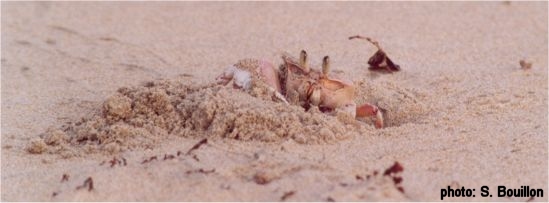|
A field guide to Kenyan
mangroves
|
Ocypode ryderi Kingsley
Family: Ocypodidae

Zone: Not usually associated with mangroves, but can occur in nearby vicinity on sandy beaches. This is usually the crab species you can see swarming the ocean beaches at night in the millions.
Habitat: Sandy beaches (see also Burggren and McMahon, 1988).
Food: Omnivorous (also eat juvenile sea turtles when they crawl from their nest.
Ecological notes: Can survive without water due to its strong ability to take up water from damp sand via its setal tufts (Wolcott, 1976).

Distinguishing characteristics: In Kenya, the ghost cran without long stalks on top of their eyes (compare with Ocypode ceratophthalmus)
Geographical range: West Indian Ocean to West Pacific Ocean (Richmond, 1997)
References:
Burggren, W.W. and B.R. McMahon, 1988 (eds.) Biology of the Land Crabs Cambridge University Press. Cambridge, UK. Pp 186-210.
Richmond, M.D., 1997. A guide to the Seashores of Eastern Africa and the Western Indian Ocean Islands. Sida / Department for Research Cooperation, SAREC. Zanzibar, Tanzania. 448 pp.
Wolcott, T.G., 1976. Uptake of soil capillary water by ghost crabs. Nature, London 264: 756-757.